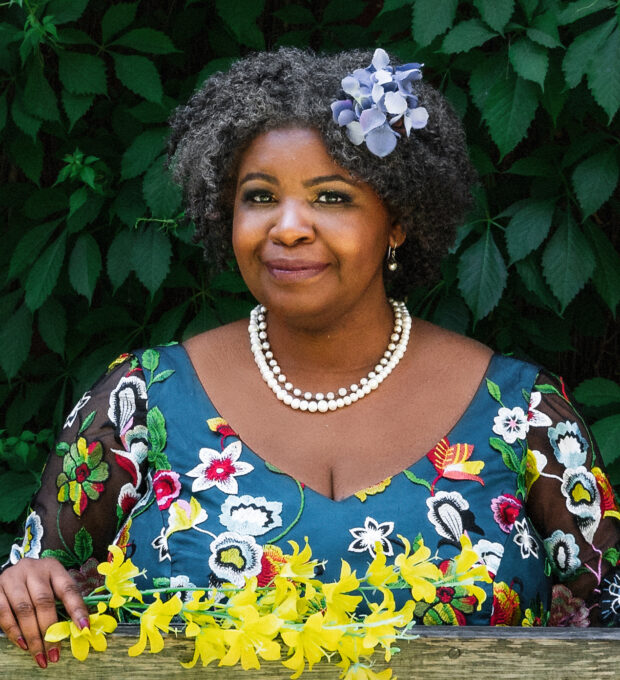it may look good on instagram but you want to enjoy living in it

23.01.2023 Editorial
Design has an image problem. When well-crafted, functional interior design is conflated with superficial, aesthetic (or anti-aesthetic) ‘decorating’ in the public eye, its perceived value takes a hit.
INTRODUCTION
An advertisement for a ‘quickie course’ in interior design was recently brought to our attention. The online ad promoted an "interior design" course that took only a few weeks to complete. All ICoD Education Members must have, at minimum a university-level degree in design. This is because we estimate that this is the minimum knowledge base needed to educate a competent designer. For any interior designer with years of university-level education and practical experience, a ‘quickie course’ framed as legitimate design training is shocking. We are alarmed to see that there are courses of design being sold that are only a few weeks long. This marks a very clear misunderstanding between design, and what we are calling for the purpose of this article, ‘decorating’.
It summarises the way professional values (as an individual designer, as well as standards of design professionalism for design more broadly) are being undermined. This speaks to a fundamental problem in the industry of design where the designers, interior or otherwise, are working in competition with practitioners who hold little or no training and still claim the title of designer. Due to the influx of this type of ‘designer’ and the poor work they output, it becomes difficult for designers to assert their value.
At the Council, we know that this issue is not new. The issue of professionalism and making the distinction between a design professional and someone who is offering ‘design-like services’ is a core part of what we consider to be the Council’s mandate. Elsewhere we have discussed the issues surrounding apps and online platforms that advertise quick and cheap designs, in order to take a stand against their role in this degrading of design standards. This is yet another example of design devaluation and unclear standardisation turning up in the interior design industry; in other words, untrained ‘designers’ mimicking the aesthetics of professional design without following design methodology or functionality.
In conversation with Jennifer Turner, an independent Spatial and Interior Designer based in Australia, Charrisse Johnston, Chair of The African Institute of Interior Design Professions (IID) (South Africa) and Trevor Kruse, CEO of Interior Designers of Canada (IDC) (Canada) we attempted to sort out why decoration and interior design were being conflated. We also wanted to understand more about the growing phenomenon of what we have termed ‘performative design’. Finally, we see part of our role at the Council is to react and advocate for how to draw clear lines in the sand so that professional designers in all spheres are valued for what they do, and our hope is to open up this conversation.
DECORATOR VERSUS DESIGNER
We often hear the lament from the professional design community that, ‘decorators are not designers’. In order to examine this issue — for the sake of simplicity and clarity — we have asked some design association experts to help us make the distinction and define the terms clearly.
Put simply, “decoration is about aesthetics – a ‘look’”, explains Charisse Johnston, whereas, “interior design is about a rigorous thought process and problem solving methodology that is based on a deep understanding of human behavior, systemic and organisational structures, project goals, health and wellness, environmental sustainability and social responsibility.” Johnston is the current Chair of the African Institute of Interior Design Professions (IID), a South Africa-based organisation dedicated to establishing, promoting and maintaining expertise, professionalism, sound business practice and high standards throughout the industry. Trevor Kruse, CEO of Interior Designers of Canada (IDC), sums this up as: “…education, experience, and examination. In almost all countries, to become an be an interior designer requires graduating from a recognised program, carrying out a minimum four-year bachelor’s degree, followed by three years of supervised work experience, ending with the completion of a qualifying exam.”
Decoration is about aesthetics – a ‘look’. Interior design is about a rigorous thought process and problem solving methodology that is based on a deep understanding of human behavior, systemic and organisational structures, project goals, health and wellness, environmental sustainability and social responsibility.
— Charrisse Johnston, Chair of the African Institute of Interior Design Professions (IID) South Africa
Giving the example of the region he practices in, Trevor Kruse explained to us that in the United States and in Canada, design practitioners must pass an exam to qualify to practice. A regulatory body, the National Council for Design Qualification (NCIDQ), demands a minimum of 3-4 years of full-time degree which includes elements of safety, building codes, and accessibility. As Kruse points out, this ensures that a professional standard is maintained to be considered a ‘designer’: “The NCIDQ exam, which is the (Canadian) profession's recognised indicator of proficiency in interior design principles and a designer's commitment to the profession covers building systems, codes, construction standards, contract administration, design application, environmental consideration, energy consumption, professional practice and project coordination.” (See more about the NCIDQ here). Compared to quickie courses, this very different education, training as well as rigorous examination standards, involves much more than aesthetics.
 Many so-called professional interior designs are carried out by decorators inspired by photographs that have a lot of Instagram likes. (Photo credit: Pinterest)
Many so-called professional interior designs are carried out by decorators inspired by photographs that have a lot of Instagram likes. (Photo credit: Pinterest)
NEW DESIGNERS LEARN FAST THAT ‘PERFORMATIVE DESIGN’ SELLS
Despite the existence of many good interior design programmes, when teaching students design at the university level, Jennifer Turner, a designer based in Australia, stated to us that she noticed a shift in how design was being taught. Mainly, courses were becoming more theoretical and less about drawing and problem-solving. Moreover, the presence of new media — and the predominance of social media platforms — was supplanting university programmes to create more informal, online training spaces, like the one that we were contacted about. This plethora of off-the-map design training is allowing practitioners to skip the long and important stages of education, experience, or examination and head straight to printing business cards, creating an Instagram page and even starting a design business.
Amongst the legions of interior decorators misinforming the unknowing public about what the design industry is, there are reality TV programmes, social media sites and home renovator platforms such as Houzz making plenty of money out of servicing opportunities for those who misinform and profit from the word “design” because there is plenty of money involved in it for them to do so.
— Jennifer Turner, Spatial and Interior Designer (Australia)
While it’s true that some ‘decorators’ have more training than others, notes Kruse, these are vastly different professions. Kruse sums it up as follows: “Interior designers are required to protect the public while they provide quality service, decorators can make it up as they go”. And because this decoration work is supported by an array of social media channels, these decorators take on the identity of designers and still find success, a phenomenon recently coined as performative design in which the work is more about developing a designer persona than developing the work a designer is trained to do.
The definition of “performative design,” according to the American Institute of Graphic Arts (AIGA) is as follows:
Performative design ultimately reduces the practice of design from a wide range of creative, psychological, communication, and problem-solving skills to a narrow practice focused on the reproduction of popular styles and interfaces for the sake of feeling like and being perceived as a skilled designer. The success of performative design isn’t measured by its usefulness or utility in the world — a more traditional method for evaluating the quality of a design — or the meaning the work brings to its users’ lives, but rather how closely their work mimics what is considered “good design."
According to Johnston, the performance goes like this: decorators are hired for cheap to create a space quickly, often inspired by photographs that have a lot of Instagram likes. Such interior design ‘scenes’ can be copied using un-researched processes and materials that may not at all fit the client’s actual needs. This is very different from the ethics and methodologies of a professional interior designer, who is hired for their expertise, judgment and knowledge, and to make the lives of their clients better. Professional interior designers "understand that what looks good on a client’s Pinterest board may not actually be appropriate for their lifestyle or needs,” writes Johnston.
That online platforms and reality TV programmes profit from supporting decorators to copy work, and do fast work, all the while hijacking the definition of ‘interior design’ means spaces like Pinterest cannot be used by true professional interior designers who shy away from such spaces where they might find and promote their work. Why? Because now professional designers fear being positioned into the same ‘unqualified’ category. Kruse expands this thought, saying some possible downsides of dealing (or co-mingling statuses?) with non-professionals is that it could have an effect on the reputation of the interior design industry. This means a serious compromise in the moral and ethical standards professional designers strive to uphold and expect to be recompensed for—as professionals.
Johnston elaborates, saying that, to be a designer practicing performative design, is about focusing more on developing the persona and visual output of a skilled designer than on creating products or services that have a positive impact on their customers or on the designer. This is the idea that you could make a house where the cushions are uncomfortable, and the space is not conducive to the activities in it. But if this space photographs well on social media it is considered “good” — that is to say successful — design.
What does it mean when the practice of design has become intertwined with the most self-centered and harmful dynamics of the social web? Johnston states that, for many, it means a reluctance to engage in the psychological and emotional aspects of design that are necessary for design to function as a tool for substantive impact. In other words, when 'design' becomes performance, it is not really design.
BAD DESIGNING—THE HIDDEN COSTS OF DEALING WITH NON-PROFESSIONALS
When we asked, what are the possible hidden costs or downsides of dealing with non-professionals? The loss of design methodology can be not only bad design, but harmful design.
The superficial talents of decorators, to pull together the personal elements that make a space beautiful, particularly our homes, in creative ways – whether through colour, furniture, materials, artwork, etc. fail to execute the core elements of design methodology. As Johnston puts it, “Professional interior designers not only understand the visual and tactile aspects of a space but they go beyond the surface by understanding human behaviour and physiology in order to create highly functioning spaces that support physical and mental well-being and performance.”
In addition to the necessity of education, experience and examination, having technical expertise in the construction of spaces in which close collaboration with other experts such as architects, MEP (mechanical, electrical and plumbing) engineers, lighting and acoustic consultants, branding and graphic consultants, historical preservation experts, etc. is considered fundamental to the research and methodology required for a project. Not only that, professional interior designers understand building codes and are held to higher standards in the form of Continuing Education requirements, professional practice exams, and professional ethics.”
The risk and hidden costs of working with unqualified designers, is that they have no mechanism for complaints or discipline through an overarching regulatory body. They may incur unnecessary expenses repairing or redoing things that arise which may not be covered by mandatory insurance as required by all provincial organisations.
— Trevor Kruse, CEO of Interior Designers of Canada (IDC) Canada)
Designer Jennifer Turner recounted to us that she has been called by clients who had received unqualified design services where the interiors they have built have needed to be ripped out in order to start again due to incorrect product specifications. Disastrous lack of knowledge around space-planning and poor detailing amongst many other faults with the space can result in huge costs for the client. It also leaves a damaging view of what, again, has been perceived as professional design services—when in fact, carried out by untrained non-professionals.
Sometimes what seemed like a bargain actually requires expensive upkeep or turns out to be low quality.
— Charisse Johnston, Chair of the African Institute of Interior Design Professions (South Africa)
Professionals, insists Johnston, think about the entire life-cycle cost and not just the initial investment. What often happens is that the client doesn’t realise there are so many more options than the non-professional designer presented, says Johnston. Or the decorator made mistakes that delayed the project completion or created many unexpected costs to remedy the issues. Sometimes what seemed like a bargain actually requires expensive upkeep or turns out to be low quality. Or, a space looks great initially but once the client starts actually using a space, they discover it doesn’t function well. The lighting may not support the uses of the space; the furniture covers up the power outlets; the circulation is unwieldy; the space serves a single purpose and cannot be adapted; etc. Professional designers employ systems thinking so they consider the project within the perspective of the client’s overall needs, both now and in the future.
ETHICAL DESIGNING AND ITS IMPACT ON PUBLIC SPACES
Designing for access to all kinds of people and contexts means consulting those who have lived experiences encountering those spaces. Providing access to certain material realities—to spaces, to knowledge and experiences—is not always fair and just. We have emphasised that a fundamental part of the designer’s job is to understand how the interplay of social, economic, environmental, technological and geographic factors may grant or block fair access in certain contexts—and to design for access to find new ways to let more people ‘in’. This is particularly applicable to the work of interior and spatial designers.
HOW CAN A CLIENT KNOW IF THEY ARE DEALING WITH A PROFESSIONAL?
In other words, how can a client tell if the person they are dealing with is reliable/ trustworthy (a qualified designer)?
All the experts agree that clients must do their research: when hiring a professional, look for formal education, professional accreditation, and membership with a professional interior design organisation. It is not out of order to ask for references or consult former clients about the process. The main message is: not to just rely on a portfolio of photos, especially ones posted on social media. In short, potential clients should do their due diligence and insist on trained, qualified, and insured professionals. They can research to see if there are professional associations or certification bodies that are recognised by non-profit associations (those that are not, might be for-profit schemes, and therefore are potentially less impartial). Holders of such credentials tend to have proven their expertise in understanding and applying current codes established to protect public health, safety, and welfare and certified designers have the advantage of gaining wider industry visibility and recognition.
Kruse suggests that clients ask for credentials, proof of qualifying exams, and even proof of mandatory liability, called “errors and omissions” insurance in Canada. If there is a professional body in the country where the project is being developed, the status of the designer can be verified through the association or the association can aid in finding the relevant resources.
CONCLUSION
There are decorators who are mostly just skilled at making things look good, without any real concern for the aspects that are not visible in a picture like how the space will be used, comfort, building code, lifetime use, durability, etc. But a professional interior designer (or interior architect) will have more in-depth training— usually, a University degree — that takes into consideration how it looks and feels but also things like the flow of people through a space, light and air quality, ergonomics, sustainability and even accessibility and inclusion. Designers are professionals that have undergone many years of training and specialisation, they understand things like building codes, and how to work with clients to understand their occupational needs beyond the visual. Thus, dealing with a designer can save money in the long term because they will have a more complete thought-out solution and there will be less need to correct, both for trendiness — repeating trends that are impractical and visually tiring that will feel dated quickly — and for more practical issues like poor quality finishes.
__
The Council would like to thank Jennifer Turner (Australia), Charrisse Johnston (South Africa) and Trevor Kruse (Canada) for their contributions to this piece.
BIOS
Jennifer Turner, Interior designer
BA Hons 3D design, Director / founder - Turner Bespoke design

Jennifer Turner is a professional interior designer with a career in varying sectors of the design industry both in London (UK) and Perth (Western Australia) operating for just over 23 years. Jennifer has global design experience working on projects ranging from retail and residential design in London to hotel, resort and airport design in Dubai, Abu Dhabi and Shanghai. During her career, she has taught in the field of design in interior Architecture at Curtin University in Perth, while contracting to architectural practices and running her own business. Now with a predominant focus on high end residential design Jennifer works as a sole trader practitioner specialising in high end residential, furniture and boutique hospitality design in Western Australia.
Charrisse Johnston, FASID, Assoc. AIA, LEED AP, WELL AP
Chair, The African Institute of Interior Design Professions (IID)

After earning an undergraduate degree in Behavioral Biology and an MBA in management and marketing, Charrisse Johnston was a Wall Street strategic planning executive before turning to interior design. She spent nine years at Gensler, the world’s largest architecture & interior design firm, where she designed learning and commercial workspaces and managed a design studio. She then established a new interior design practice for Steinberg Architects, a regional firm with offices in California and Shanghai. She is also a Fellow and past Chair of ASID, the 25,000 member American Society of Interior Designers, and a frequent lecturer design competition juror across the world.
Charrisse moved from Los Angeles to Cape Town, South Africa in 2018 and now leads StudioSALT alongside her architect husband. In addition to volunteering as Chair of the IID, she also teaches online for the Masters of Strategic Design Program at IE University in Madrid and the Masters of Interior Architecture program at UCLA, and is a board member of the International Design Continuing Education Council.
Trevor Kruse, Chief Executive Officer
Interior Designers of Canada (IDC)

Trevor Kruse has enjoyed a 35-year career as a professional interior designer along with nearly three decades of volunteer service on provincial, national, and international boards, including the Association of Registered Interior Designers of Ontario (ARIDO), the Council for Interior Design Accreditation (CIDA), the Society of British Interior Designers (SBID), and the International Federation of Interior Architects/Designers (IFI).
He has forged strong relationships with academia, government, media, industry partners, and design trade shows and events, along with IDC’s allied associations such as the American Society of Interior Designers (ASID), the International Interior Design Association (IIDA), the Interior Design Continuing Education Council (IDCEC) and the Council for Interior Design Qualification (CIDQ).
LEXICON
DECORATION: The application of aesthetic criteria to interior spaces without the professional knowledge of design.
‘GOOD’ DESIGN: The Council defines ‘good’ design as design that takes into consideration the social, cultural, economic and environmental ramifications of the work, producing equitable, accessible, culturally aware, and sustainable design.
INTERIOR DESIGN: (also sometimes called Interior Architecture) The application of design to interior spaces, using knowledge of materials, building components, decorative surfaces, space planning, sourcing, light, color, sound and ergonomics, with the objective of creating functional and pleasing interiors for restaurants, offices, homes, retail spaces, hotels, etc. improving quality of life and safeguarding health in private, public, commercial and work environments.
PERFORMATIVE DESIGN: Design that looks good, photographs well, is apt to social media promotion, but is not good design. Performative design may or may not be functional or even exist (for instance, virtual design).
PROFESSIONALISM: the difference between doing something for immediate personal gain or gratification (regardless of the impact on others), and doing something because it is right, and builds long-term confidence in the profession at large.

relatedarticles

ICoD exclusive interview with kyle rath on design and AI

robert l. peters: guiding the future of design

ICoD interviews elizabeth (dori) tunstall on decolonising design
